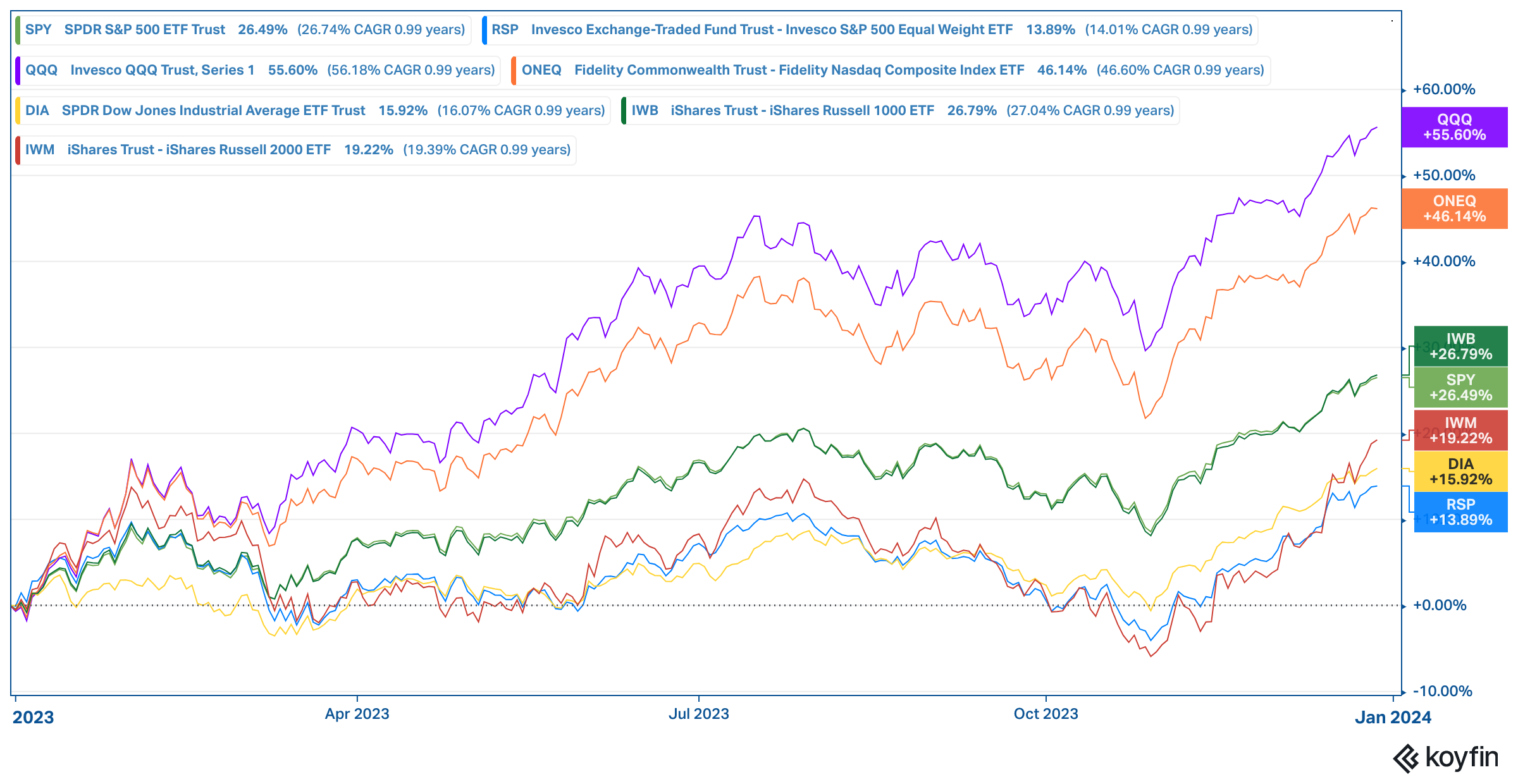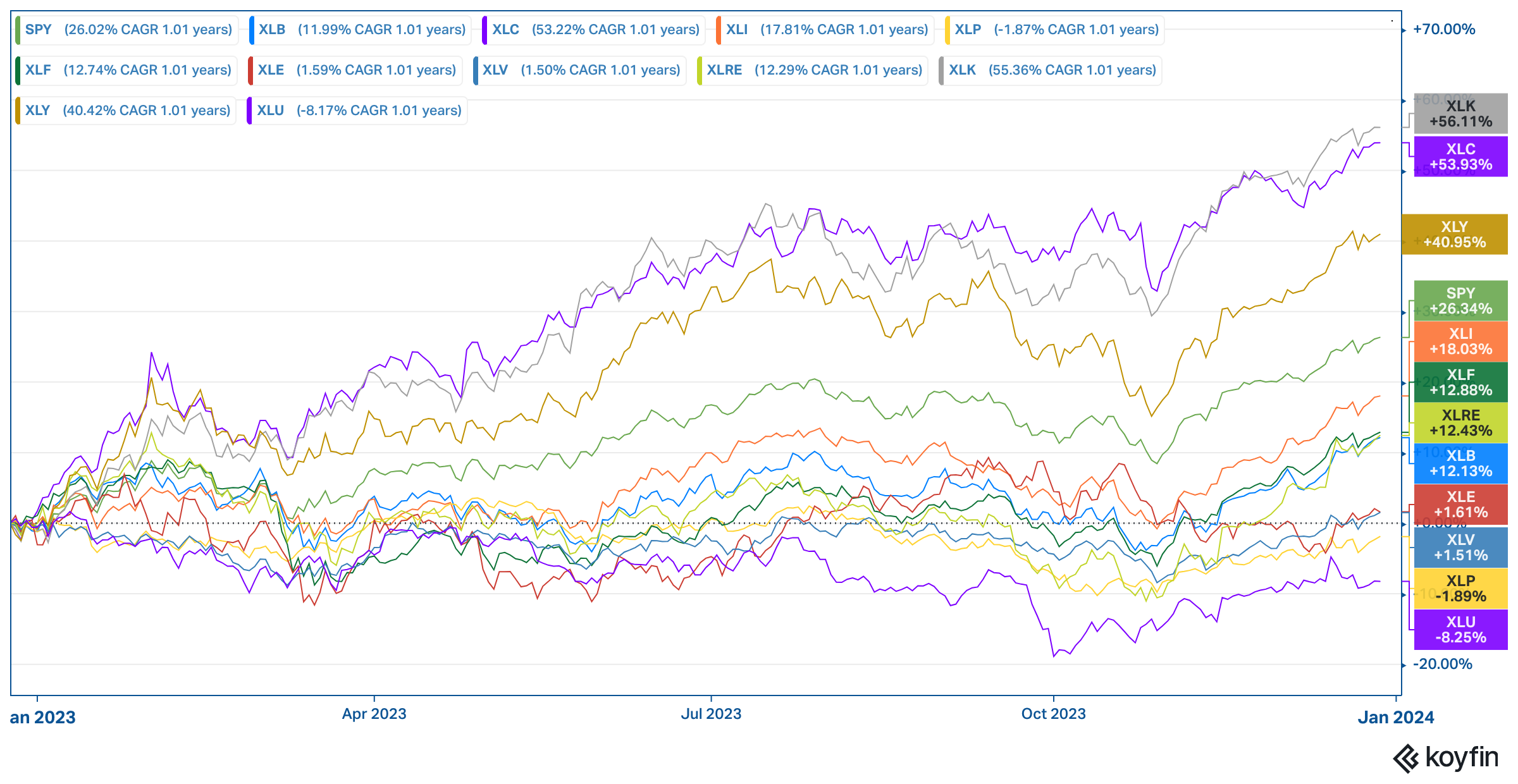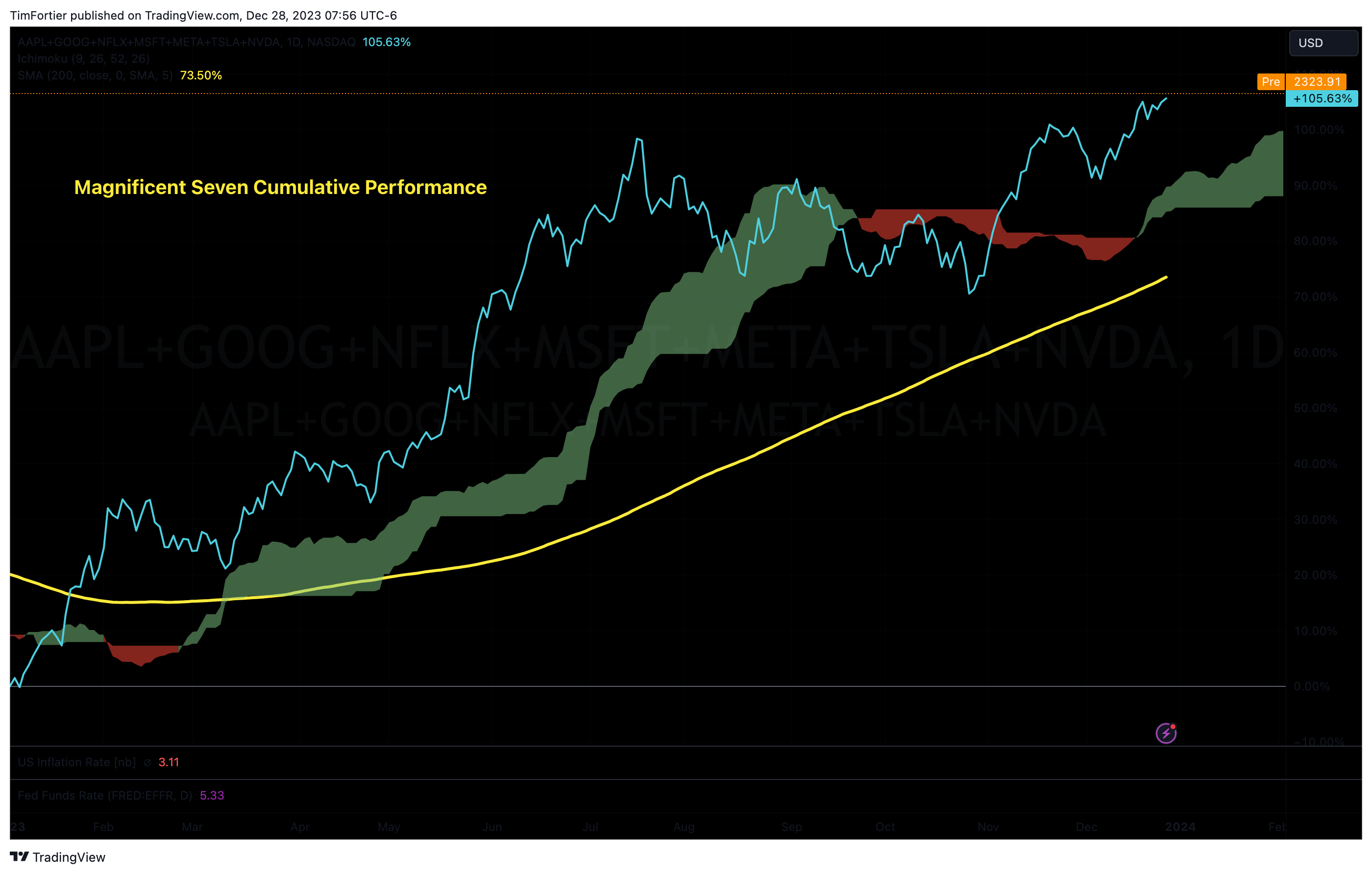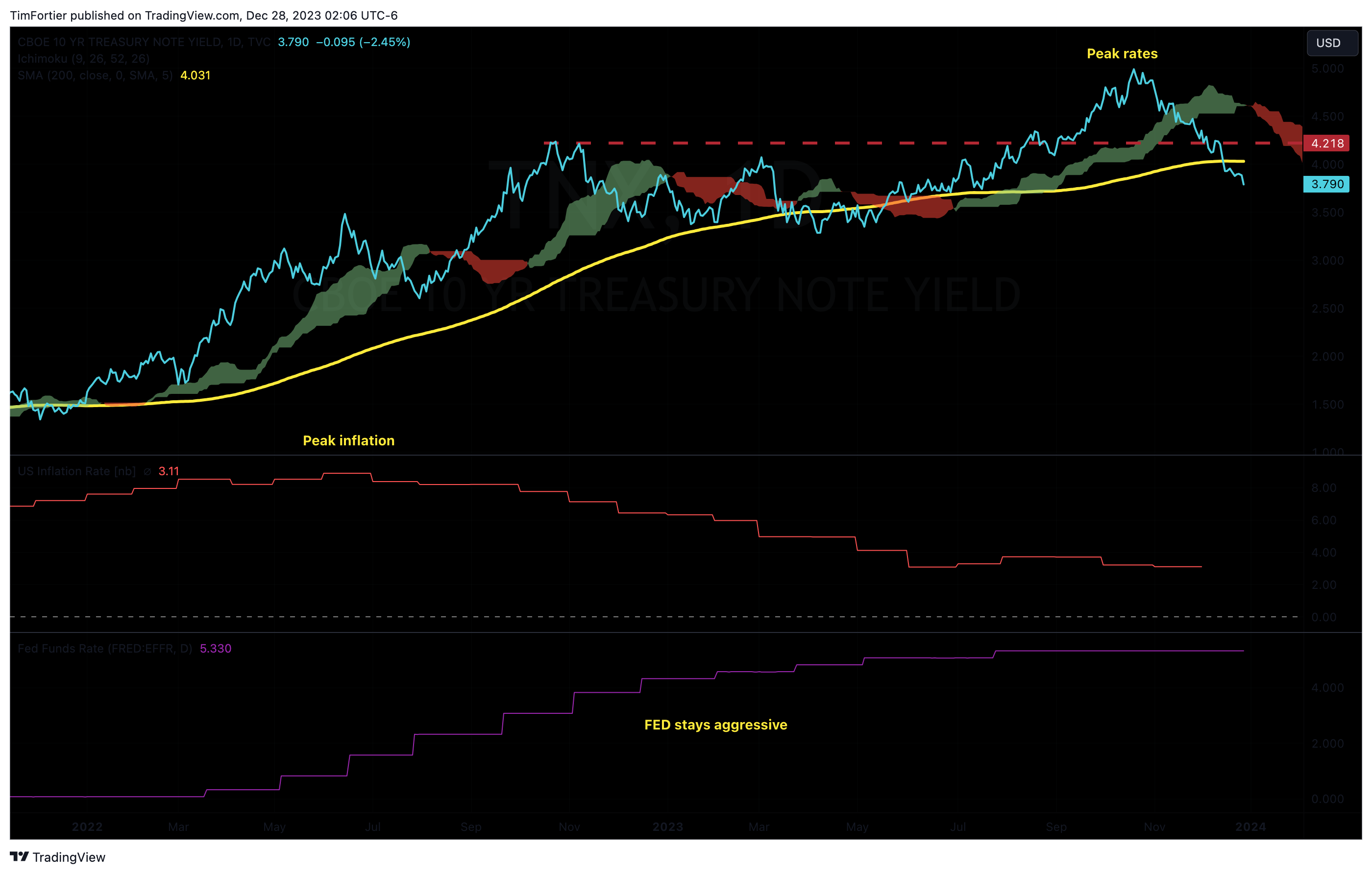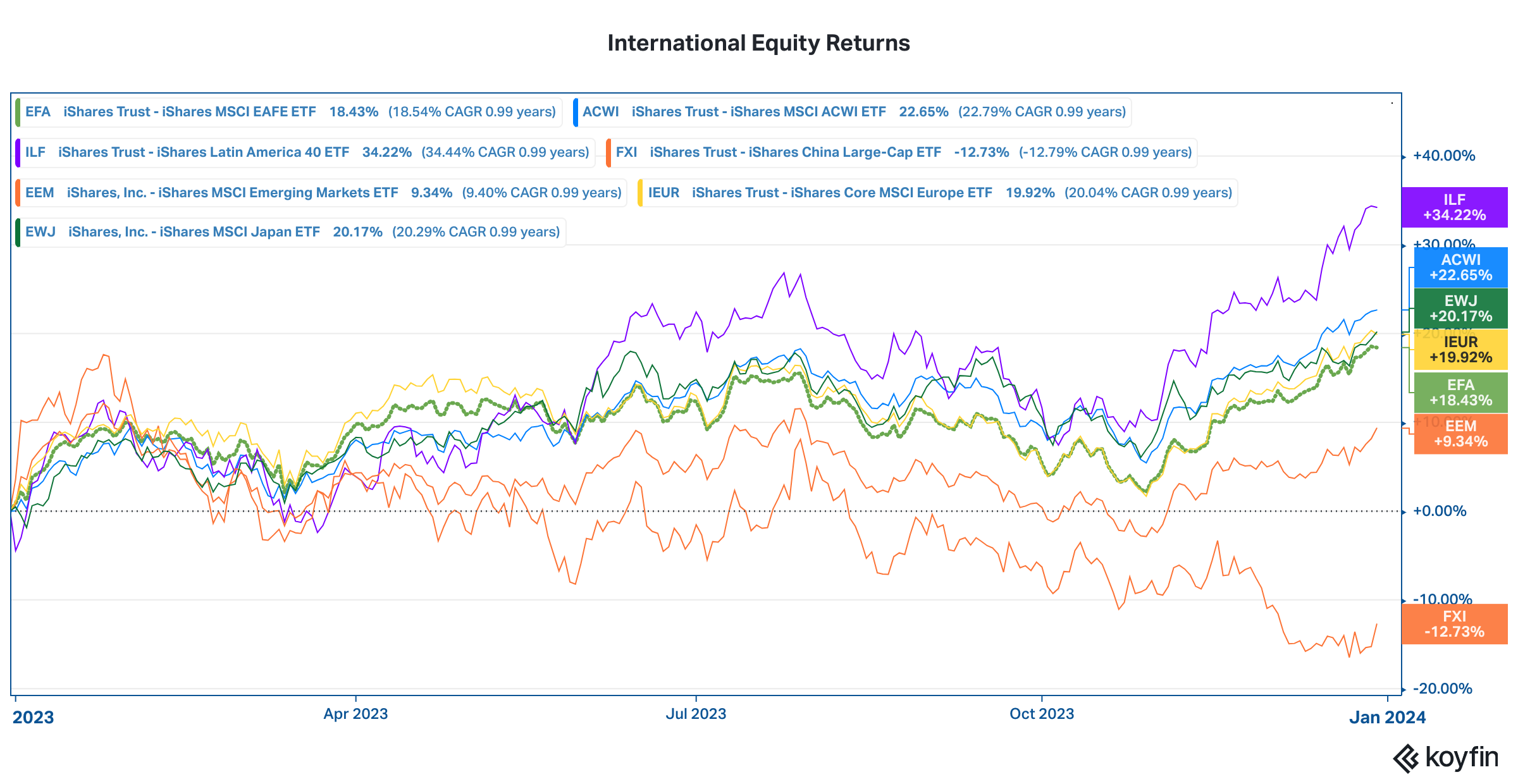Related Blogs
December 28, 2023 | Avalon Team
With just two trading days left in the year, the 2023 market is now mostly in the rearview mirror.
In today’s issue, I’ll review some of this year’s highlights and conclude tomorrow with my thoughts on the current market heading into 2024.
Part 1: U.S. Equity Market Overview
As we began 2023, the financial markets had just returned one of their worst performances ever, with both stocks and bonds falling by double digits in 2022. Fear of inflation was still running high and central bankers were tightening all around the globe.
As we conclude this year, 2023 has provided a welcome contrast for investors as stock and bonds are both positive, inflation has fallen steadily, and the FED policy officials appear to have pivoted away from their aggressive tightening stance.
In terms of the NYSE Bullish Percent Indicator, our primary tool for determining supply and demand, there were four major shifts throughout the year, as this chart shows.
The deepest selloff concluded in late October. Demand has since controlled stocks and continues to do so.
2023 U.S. Market Index Performance
While every major U.S. equity index has provided investors with positive returns, the cap-weighted technology indexes blew all the others away as the greatest concentration of returns was seen in mega-cap technology stocks.
With the top ten stocks within the S&P 500 accounting for over 30% of the market-cap weighted performance, this helped to pull the performance higher to double that of the equal-weight S&P 500 (RSP).
What this meant for investors is that owning a “diversified” portfolio and about anything other than large-cap technology, most likely lagged the popular S&P 500.
Data from the Apollo Group showed 72% of the S&P 500’s stocks underperformed the index this year, a record.
Market Sectors Performance
Similarly, the concentration of performance is visible when looking at sector performance for the year.
The Technology (XLK) and Communication (XLC) sectors led by a whopping margin over other sectors with defensive sectors, Consumer Staples (XLP) and Utilities (XLU), slightly negative.
The “Magnificent 7”
Not to belabor this point, but at no time in history has such a few number of stocks concentrated the performance of the popular averages.
Through yesterday’s close, the Magnificent Seven (AAPL, AMZN, MSFT, GOOG, META, NVDA, TSLA) are up 106%.
All-in-all, we still obviously have the same dynamic of the mega-caps containing segments (XLK, XLC, & XLY) being the only ones beating the S&P 500 composite this year, but it is beginning to widen.
I will discuss these trends further tomorrow.
There’s no question all the Magnificent Seven stocks are having a great year. But it’s interesting to note many of the “magnificent” stocks this year are still in the hole in the past two years.
Tesla (TSLA), Google (GOOG), and Amazon (AMZN) have yet to recover from their 2022 losses.
Concerns arise as the Magnificent Seven stocks risk losing their appeal amid the Federal Reserve’s soft-landing approach.
Companies within the group, such as Apple, have faced challenges like declining hardware sales and difficulties in the Chinese market.
Apple is already a $3T company and MSFT is valued at $2.7T. How much benefit, intrinsic value, and then some is already priced into these companies?
As an aside, it’s also worth noting that according to Bank of America research, U.S. Corporations have purchased a record amount of their own stock in recent weeks.
No doubt this, plus some retail FOMO has been an important factor in the current rally.
Part 2: U.S. Fixed Income Market Overview
The chart below tells the story of U.S. interest rates, inflation, and FED policy.
While inflation peaked at 9% in June 2022, Fed Funds, as set by policymakers, continued to rise throughout 2023.
The big change has been the perceived shift in policy outlook that has sent the yield on the closely watched U.S. Ten Year note falling from a peak yield of 5% to a recent low of around 3.80%.
Among the various fixed-income asset classes, high yield (JNK) and corporate bonds (LQD), a benefactor of “risk on” environments, have been the best-performing.
Long-term U.S. Treasuries (TLT) have staged an impressive rally as the belief in a “soft landing” has taken hold in recent weeks. But bear in mind that the market is already pricing in rate cuts in the first quarter of 2024.
Part 3: International Market Overview
International equity returns have been influenced by a wide range of geopolitical and monetary factors.
The best-performing markets have been Latin America (ILF) which has Brazil and Mexico up 24% and 22% respectively.
A combination of geopolitical factors from the war in Ukraine to the U.S. trade war with China drove investment and production to Latin America.
The Chinese market has been the worst-performing market as concerns over real estate, a sluggish economy with increasing debt levels, global headwinds, and loss of investor confidence have all played a role.
One market staging a reversal has been Japan, where governance reform and economic revival have increased investor confidence and attracted money flow back into Japanese shares.
Looking Forward to 2024
2024 should prove to be another interesting year for investors.
It is, of course, an election year which has its historical significance and it’ll be interesting to see if the economy can continue to fend off the much-predicted recession.
I will take a look at these factors in more depth in my upcoming issue.
If you have any questions or have been considering hiring an advisor, then schedule a free consultation with one of our advisors today. There’s no risk or obligation—let's just talk.
Tags

Free Guide: How to Find the Best Advisor for You
Get our absolutely free guide that covers different types of advisory services you'll encounter, differences between RIAs and broker-dealers, questions you’ll want to ask when interviewing advisors, and data any good financial advisor should know about you and your portfolio.



